Here’s an important fact - Most of the content we consume on the internet is meant to get us to buy something.
That’s because it’s part of a content marketing funnel, a strategy designed to guide potential customers through a series of touchpoints toward conversion.
From every blog to every article you read, the call to action is directed toward getting you to sign up or purchase something.
An article like “5 best hotels to stay at in Las Vegas” is usually aimed at getting you to book a room in one of these hotels.
But why?
A simple reason is that most of the content that you come across is part of a content marketing funnel. And in this funnel, content is the driving factor behind converting you.
So, how does it work?
Article Shortcuts:
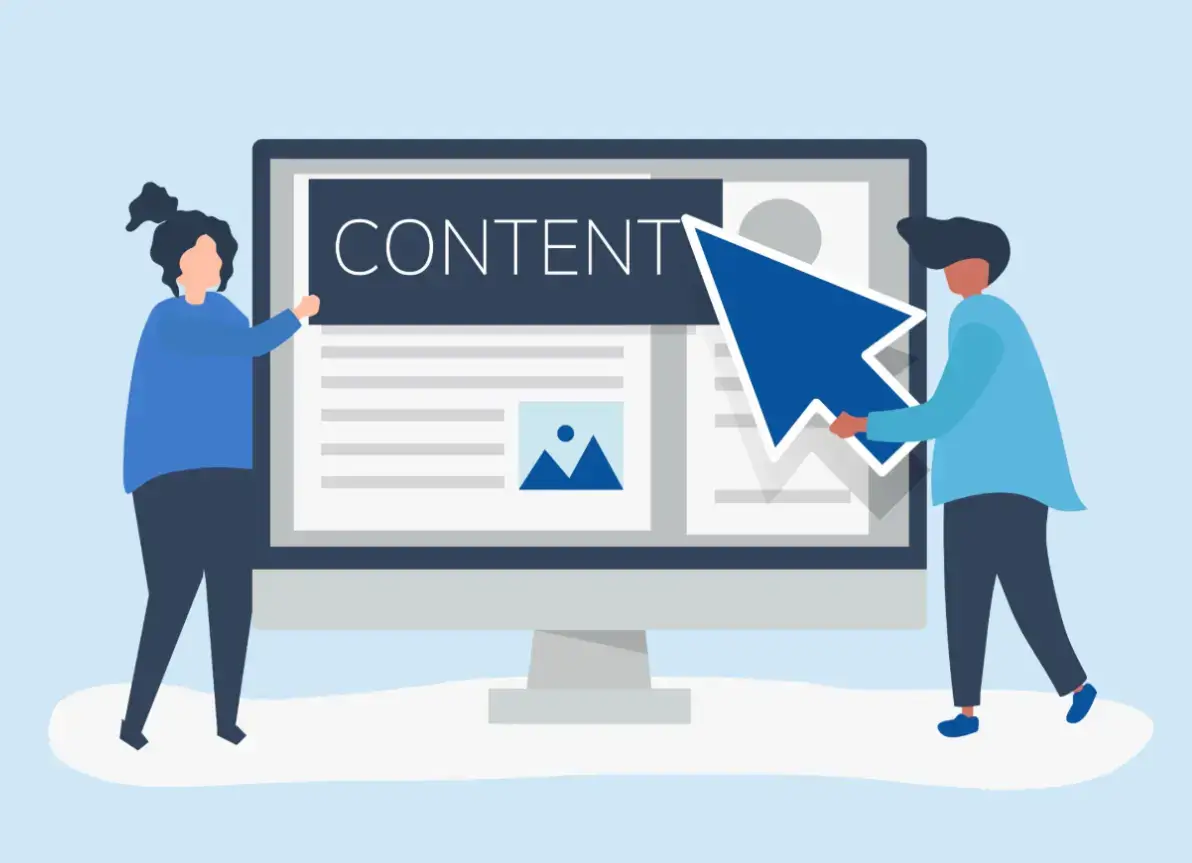
Source: Freepik
Understanding the Content Marketing Funnel and the Customer Journey
Whether it’s making a purchase, booking a consultation call, or signing up for a trial, most of the content on the internet is part of some funnel that’s aimed at driving some sort of action.
A customer purchase journey, often visualized as a content marketing funnel, is a multi-stage process that a ‘potential’ customer goes through before they make a purchasing decision.
A funnel will consist of the following stages:
- Awareness Stage
- Interest Stage
- Consideration Stage
- Decision Stage
- Retention Stage
- Advocacy Stage
In order to make the transition from one stage to another smooth, the content at every stage needs to be created exceptionally well. Let’s break down how content impacts each stage of the content marketing funnel.
1. Awareness Stage: Building Brand Visibility
The first time a potential customer walks into your content marketing funnel, it should be a given that they don’t know anything about your business whatsoever.
It’s your job to make them aware of what you do, how you can be of value to them, and what you sell.
The awareness stage is your Top-of-funnel (TOFU) content that focuses on introducing your brand to these customers. Some of the most common types of content at this stage include:
-
Educational Content
Most times, a potential customer lands on your website seeking information or trying to find some sort of answer to their question.
To satisfy their search intent, you can produce informative and detailed content on the questions they are trying to find the answer to.
In this case, the following things will work out the best:
-
- Blog posts
- Articles
- Infographics
- Case studies
The more detail you provide about a question, the better chances you have of becoming an authoritative source in your industry. This could also mean that your website is likely to get referrals and links from other websites in your industry.
-
Social Media Content
Social media still remains the quickest and fastest way to generate awareness about your brand. Brands like GoPro heavily rely on Instagram to showcase their products and use cases.
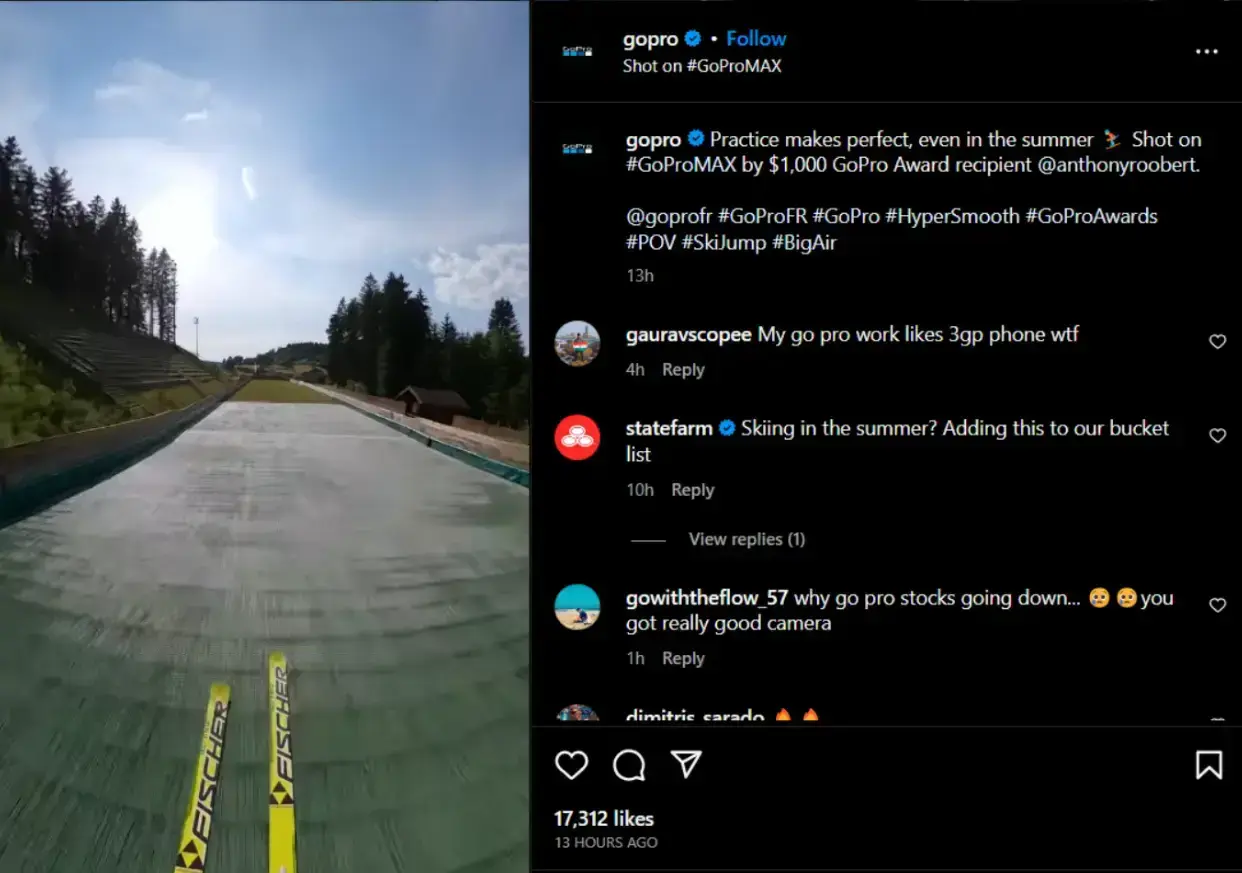
Sharing engaging and sharable content that’s bound to attract new viewers plays a very important role in building the popularity of your brand.
Across social media, you can use the following platforms for the following types of content:
-
- Instagram or YouTube for short videos
- Instagram, Facebook, or Twitter for pictures
- YouTube or Instagram for long videos
- Twitter or LinkedIn for textual posts
-
Search Engine Optimized (SEO) Content
SEO, in 2025, is beyond keywords and just on-page SEO. Instead, SEO now is about authority.
In terms of SEO, quality content plays an important role. Most importantly, this quality content needs to satisfy the search intent around particular keywords that you are trying to rank for. This content should also precisely focus on being the source of information for a specific topic.
Brian Dean, in one of his YouTube videos, explains in detail how you can rank your website across search engines and build links organically that make more users get introduced to your brand.
Before diving deeper into tactics, here’s a helpful analogy from Eric Schwartzman that frames the power of SEO within a broader content strategy:
"Content marketing is like a boat. There are three ways to move it forward: SEO (the sail), email (oar), and social (oar). Pages that rank in search are unique because they passively send you traffic all day long. SEO is powerful. Once something is ranking, it can stay there for years. And every page on your site has the chance to catch traffic – just like a sail in the wind. Email and social are activity based. You have to keep rowing to keep moving. And, paid is like the motor. Turn it on and you move forward. But you stop moving when you stop paying.
This metaphor emphasizes why SEO deserves extra attention—because it scales reach passively, unlike email and social, which require constant activity to maintain momentum.
2. Interest Stage: Sparking Curiosity About Your Brand
The next stage in making a purchasing decision is the attraction a potential customer has towards your brand. This stage is called the interest stage.
At this stage, the customer probably has either heard of your brand before or is compelled by something that you’re offering.
Here’s what works at this stage:
-
Case Studies That Build Credibility
As customers move into the interest stage, they would want to learn more about your brand and the things you have done over time.
One of the best ways to showcase your brand’s abilities is by creating case studies.
These case studies, when presented with real-world examples of how your brand has solved similar problems for others, will be very impactful in terms of building your credibility.
Viral Loops, an internet marketing service, is one of the best examples of creating compelling case studies.
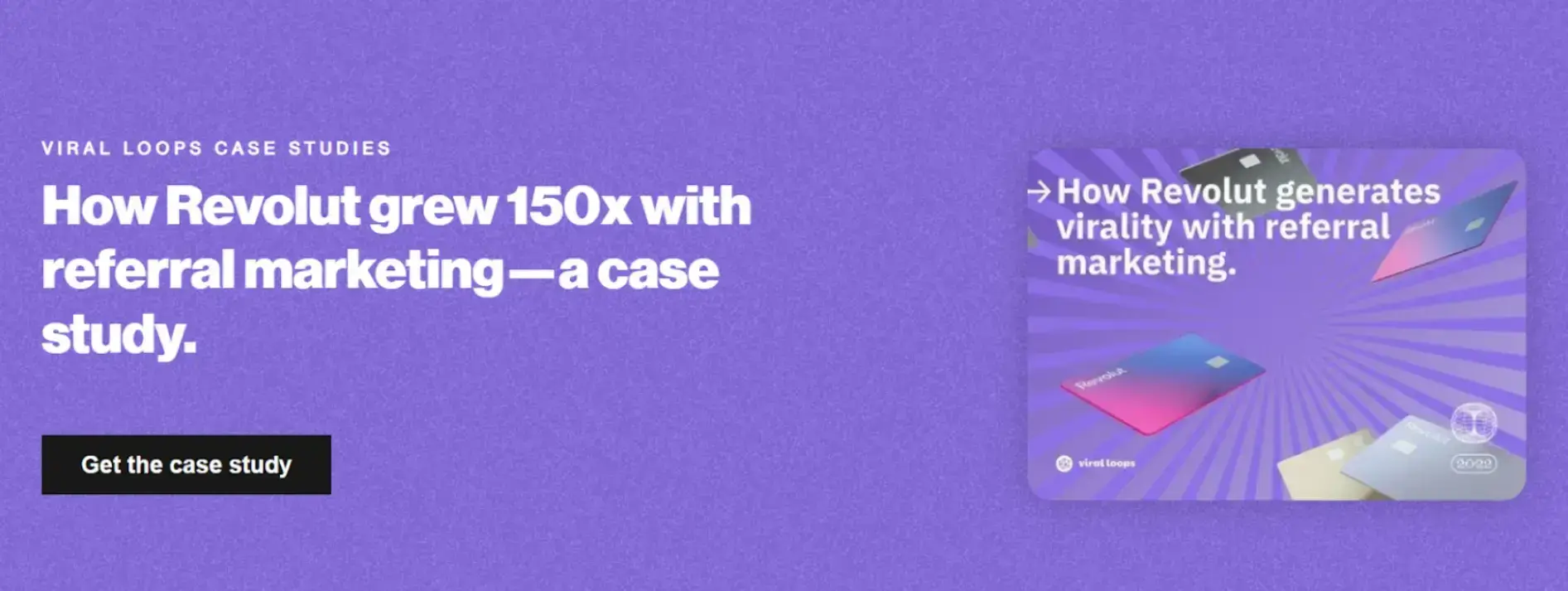
-
- You can create case studies in the form of landing pages that your customers can access.
- These case studies could also be unlocked by entering email addresses - allowing you to collect leads.
-
Webinars and Workshops for Engagement
Webinars and workshops are a direct connection between you and your potential customers.
An interactive session with your audience showcasing your product, service, and its use cases will help them understand your brand better and convince them to make a successful purchase.
These interactive sessions provide an opportunity to showcase your expertise, address specific pain points, and foster a deeper connection with potential customers.
At this stage, your webinar/workshop could have the following structure content-wise:
-
- An expert from your company explaining the use cases of your brand.
- A few past customers explain their experience with your brand.
- A guest [potentially an expert from your industry] showcasing how useful your products or services are.
-
Email Newsletters That Stay Top-of-Mind
Email still remains the most efficient method of establishing a direct line of communication between your brand and potential customers. Send out regular newsletters that include:
-
- Valuable insights from your industry
- The current news from your industry
- Updates on your products and services
- Customer testimonials and social proof
Most importantly, an email newsletter can remain an individual attracting point of interest for your business.
Finshots, a popular media company, does a great job of this. Their newsletters talk about daily stories around the world in the financial industry. However, towards the end of every newsletter, they also throw some light on their insurance company and how it has helped past customers.
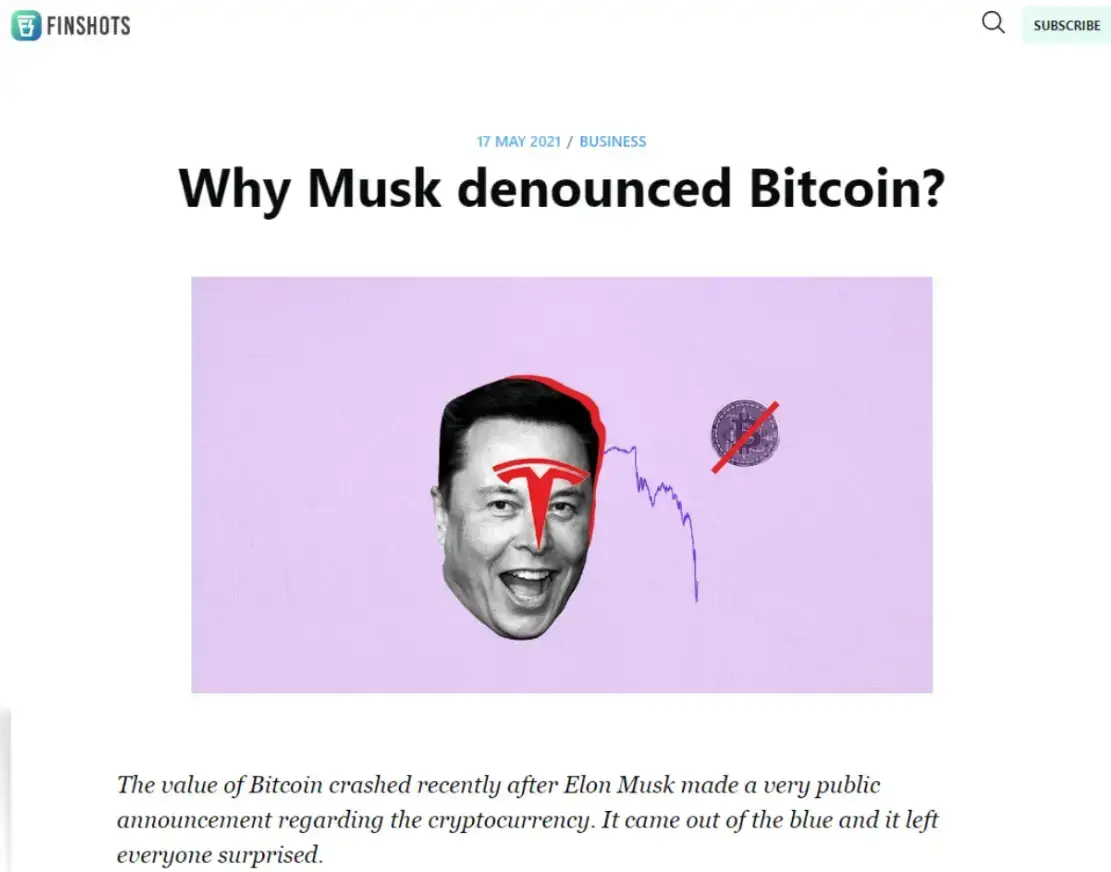
Email newsletters can keep your brand top-of-mind as potential customers move through the consideration stage.
3. Consideration Stage: Earning Trust Through Value
The consideration stage is the Middle-of-the-funnel (MOFU) stage and is an important step in terms of making a customer feel at home with your brand.
Your potential customers would compare your brand with others, learn more about your brand, and even explore other options.
At this stage, the content you offer them will play a significant role in their decision-making process. Here’s how you can absolutely nail it:
-
Product and Competitor Comparison Guides
The consideration stage means that customers are weighing the pros and cons between your brand and your competitor. It’s a major responsibility to make them lean towards your brand.
-
- Make these guides put your and your competitor’s brand head to head and talk about how your product will offer a customer a better experience.
- Create comparison guides that will highlight your brand’s strength over your competitors.
- Create comparison guides on weighing the pros and cons of your and your competitors’ brands.
-
Social Proof via Customer Reviews and Testimonials
Social proof is the biggest weapon you have in your arsenal. It is a direct indication of how well your products or services are received by your past customers.
By featuring genuine customer reviews and testimonials, you’re putting the quality of your products and services on display. The better your reviews, the shinier these testimonials seem.
CRED, a popular Indian credit card bill payment platform, has a very stylish and on-point review system on display on its homepage.
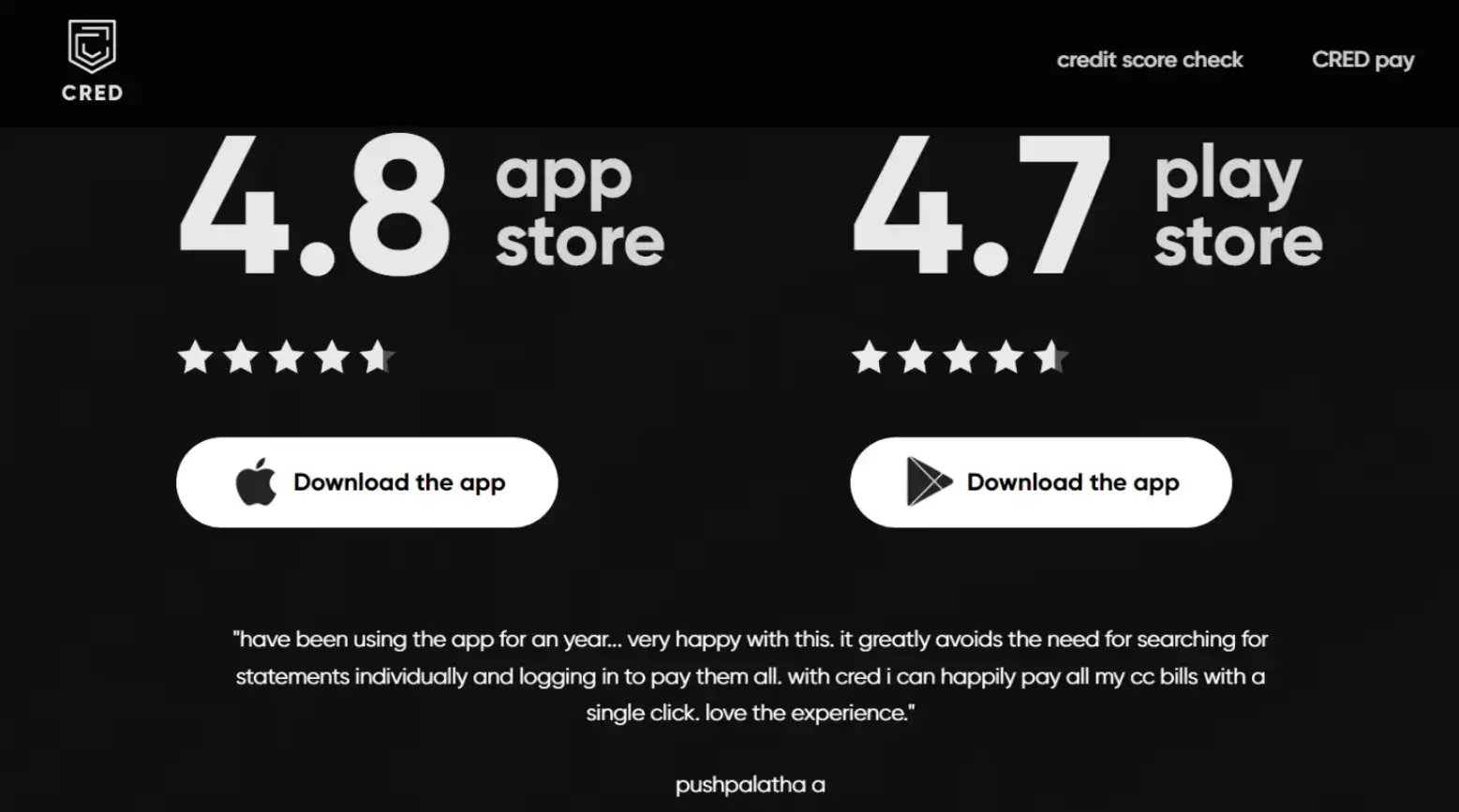
-
Effective Product Demonstrations
Demos are extremely powerful in convincing your customers about the use cases of your products or services. You may already have a “Features” page on your website, talking about everything you offer.
But practicality is what drives a purchasing decision.
A product demonstration will put your product directly in use, allowing a customer to exactly understand what it does and IF IT COULD HELP THEM.
You can craft a perfect product demonstration by:
- Recording your screen and showcasing how your product works.
- Showing your face and recording a voiceover on top of everything you do on the screen.
- Showcasing the most important features that your customers may have the most questions about.
Airtable is a perfect example of how a product demonstration should look like.
4. Decision Stage: Empowering Final Choices
The decision stage is part of the Bottom of the Funnel (BOFU). It’s the stage where the people interacting with your content will shrink yet the purchasing intent is finalized.
Given the proper encouragement, your potential customers will be more willing to interact with your content and make a final decision.
Your goal here should be to give them all the relevant information they need to make this decision. Here’s what can help them:
-
Transparent Pricing And Feature Comparison
After customers browse the catalog of your services and its features, you need to offer them options.
Providing multiple feature comparisons will help them make a final decision confidently and buy the exact plan that complements their needs.
At this stage, your content needs to be precise and on-point. Proper information about every feature. No irrelevant information.
Kaiber AI, a video-generating AI tool, is a perfect example of how pricing and feature comparison is drawn.

-
Detailed FAQs and Customer Support Content
At the decision stage, questions are almost inevitable.
Your customers might ask questions about your product, how long their plan is for, or if they will get a refund if they don’t like your product.
Address these common questions through a comprehensive Frequently Asked Questions (FAQ) section or use knowledge base software to provide detailed, easily accessible answers that empower customers to make informed decisions and reduce the need for direct support interactions.
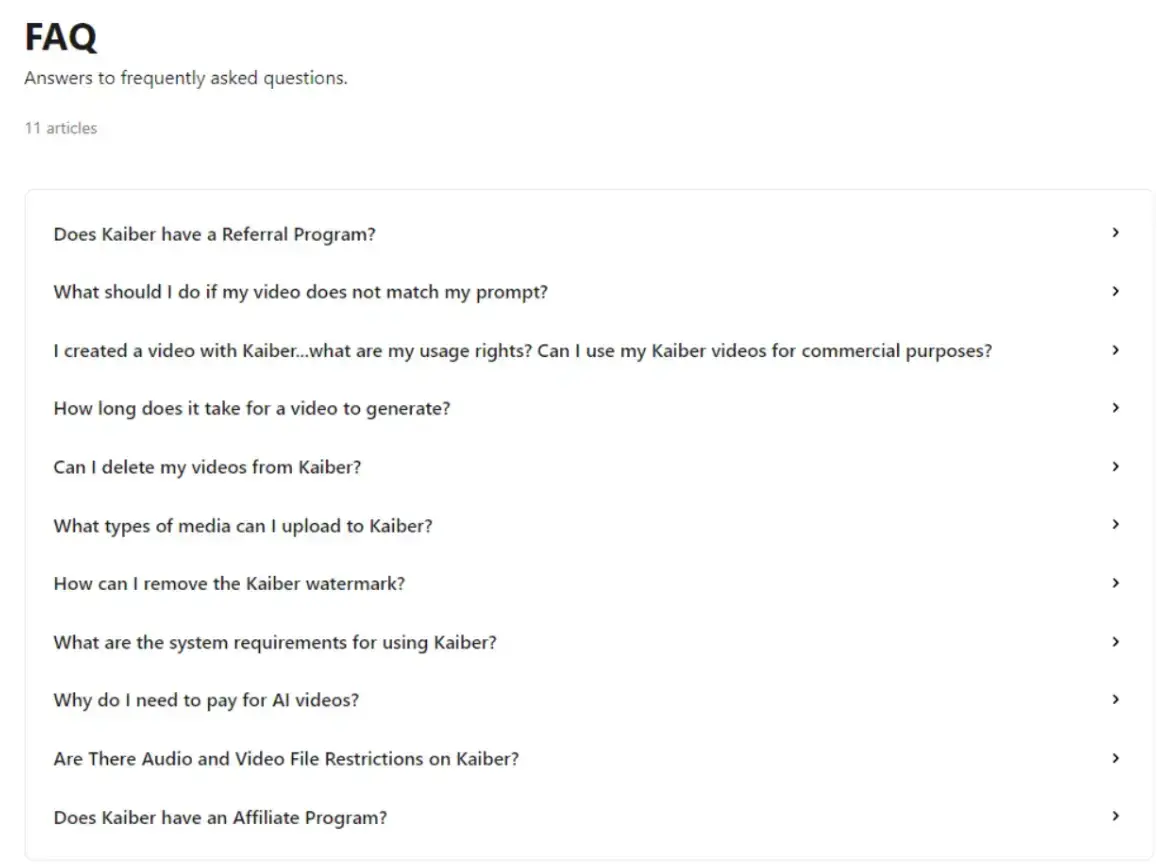
Make sure that you’re extremely detailed with every single answer you put across for every question. The more in-depth an answer is, the better a customer understands.
As part of making a decision, you can offer detailed customer support content to provide assistance to your potential customers. Navigate them to your contact pages or your helpline numbers, if any.
5. Retention Stage: Supporting Long-Term Engagement
Even though customer retention isn’t part of every traditional content marketing funnel, most companies have added this additional step to keep their customers in the ecosystem.
Your overall content strategy should aim towards keeping your audience engaged - even after they have made a purchase. Here’s how you can offer customer-centric content at this stage.
-
Educational Resources for Continued Use
The relationship between a customer and your brand doesn’t end after they convert. In fact, that’s where it starts.
Providing educational resources at this stage is crucial to help them understand your product well and keep using it.
Content-wise, make sure that you have enough user guides, tutorials, and best practices that can help your customers make the best from your product or service.
-
Onboarding Guides for Seamless Adoption
Onboarding is an important step in making sure the transition from a potential customer to a regular customer is smooth. A well-designed onboarding guide (usually in the form of an ebook or a video) will help your customers quickly become proficient users and reduce churn.
As Court Bishop of Zendesk puts it:
“The post-purchase period is a critical transition time for buyers. Consumers often need information and guidance on how to get the most value out of your products or services, so you must be ready to provide customer onboarding materials. A proper onboarding process ensures your customer base knows how to use your product or service effectively and helps with customer engagement and retention.”
When done right, onboarding content sets the stage for long-term customer success, higher satisfaction, and brand loyalty.
-
Success Stories to Reinforce Value
Putting light on how your existing customers have benefitted from your product will significantly motivate your customers to harness the maximum potential of your product.
These success stories can be in the form of small videos or testimonials.
Collect genuine testimonials from past customers and celebrate your past customers’ accomplishments to inspire new customers to unlock similar value.
6. Advocacy Stage: Turning Customers into Promoters
After a customer has finally converted, it’s time to provide them with the resources to help them market your brand for you.
There are multiple methods to do that. However, here are a few important methods that you can leverage:
-
Encouraging User-Generated Content (UGC)
One of the best methods to encourage interaction through your brand is to encourage your customers to create and share their own content related to your brand.
Some of the common examples of user-generated content include:
-
- Reviews
- Tagging you on social media
- Videos on your product
UGCs serve as authentic endorsements and can be a powerful driver of brand advocacy.
-
Referral Programs That Incentivize Sharing
Referral and loyalty programs are one of the most effective ways of marketing a brand in today’s time.
Satisfied customers are very much willing to recommend your brand to their social circles - enabling your brand to grow while making them money at the same time.
Uber is one of the best examples of how referral programs work.
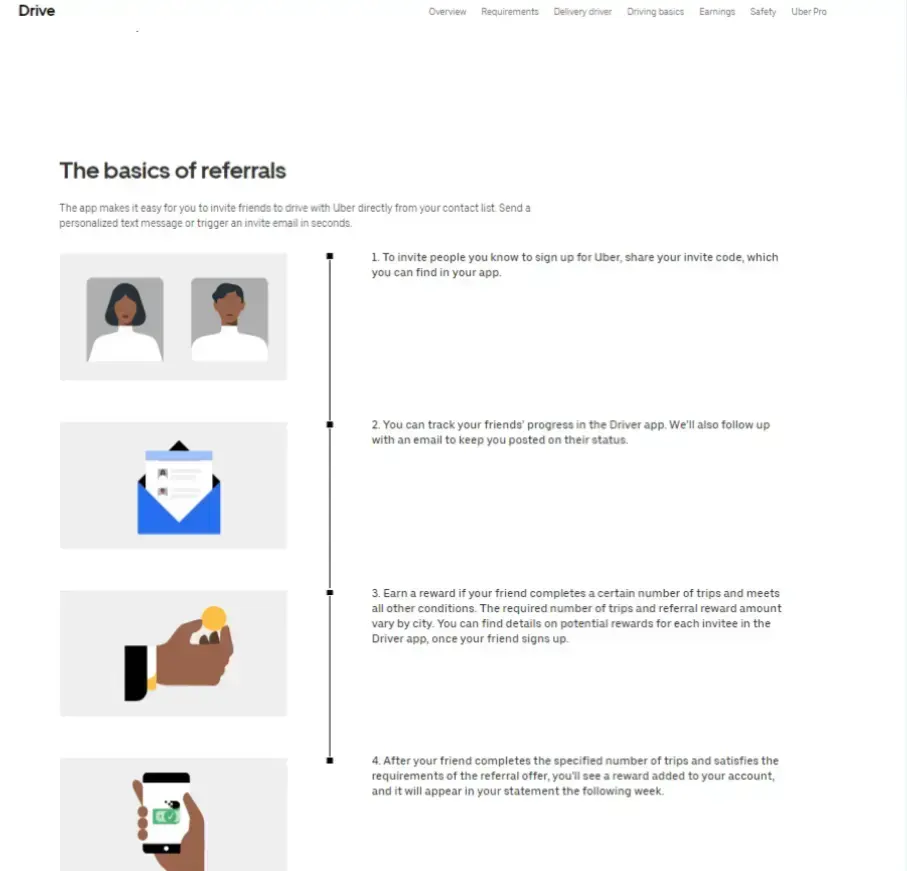
Implementing a referral program that rewards customers for successful referrals can amplify your customer base while rewarding loyal advocates.
-
Exclusive Content for Loyal Customers
Exclusive content is almost becoming a necessity for brands to have an upper hand over their competitors.
This is because exclusive content would be available to only your customers and not the general audience - making your exclusive program almost a member’s club that only a selected group of audience could be a part of.
Reward your most loyal customers with exclusive content such as sneak peeks of upcoming features, special offers, or behind-the-scenes insights.

